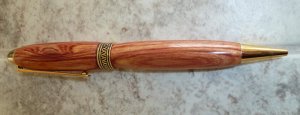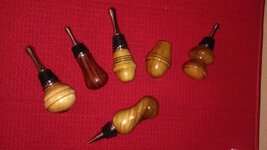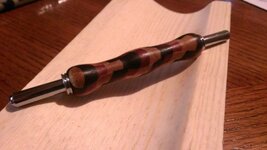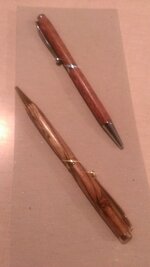I'm thinking that by trying all the different finishing techniques, we could start a "Finish of the Month" club ...

Like a lot of first time pen turners, I used friction polish on my first few pens. Loved the ease, and the look, but like almost everyone who has used it, was amazed at what pens looked like after typical handling by the user. In my case, it was friends and family, so I was glad I had not sold any, or I'd feel compelled to refinish or replace.
I've tried CA, but other than for finishing some spalted wood, which would crumble like balsa, I just did not like the plastic look and feel.
My current method is SLOW, but I like the results. I use a carbide tool to get the final shape and elimination most of the turning marks. I do not use any sandpaper, but instead use EEE-UltraShine to do get any remaining marks out of the blank. Since the EEE-UltraShine is based on wax, that left me with a dilemma -- what do I use to offer some long-term protection?
I went back to shellac, which is an excellent sealer, and dries fast. After a day to make sure it really is dried fully, I then start a multiple day process of applying light coats of wipe-on polyurethane. I wait a day, and recoat. I've found 2-3 coats is typically enough, with a day to dry in-between each application. The coats are typically smooth enough that I go right to a buffing wheel to add the desired gloss. I use the HUT wax sticks, and depending on the level of glossiness desired, use either the semigloss (brown) or gloss (white) stick.
So far it works for me, but if I were selling pens, I'd be out of business by now! This is a very time consuming process, but so far I like the results. I am doing a remodel on my shop and our house in general, so this gives me a nice diversion from that task.
Note: There seems to be two opinions on poly over shellac -- use only dewaxed, and "it does not matter". I am currently using non-dewaxed shellac (Zinser Bulls Eye) as a test, and it seems fine. I am out of dewaxed shellac flakes (I prefer to make my own), so I'll mix up some and compare the results.




